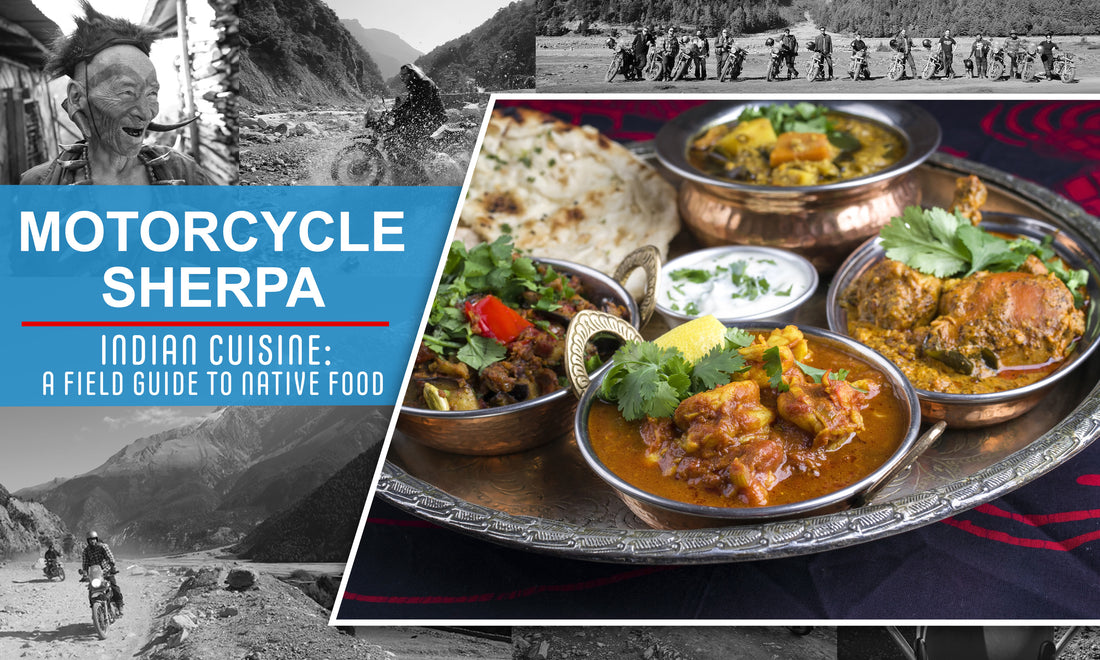To many who are not native to India, Indian cuisine can seem very intimidating. From the pronunciation of the dishes to the lack of knowledge of their ingredients, non-natives might opt for less “exotic” options even if they find themselves in the country.
Though most people know some basic Indian dishes, they probably do not realize that there is a massive array of beautiful options out there offering tastes and experiences beyond their wildest culinary dreams. By becoming educated about native Indian cuisine, a whole new world of discovery to a new culture will be opened. The basic roots of India can be found in the cuisine’s flavor.
While it would be impossible to cover the entirety of the vast catalog of Indian food, delving into the most commonly found flavors and foods on the menu in India can be a fun way to prepare yourself to experience some of the most delicious food on the planet.

The Basic Tastes of a Country
One of the earmarks of Indian cuisine is that certain spices are used in virtually all of the country’s food. These spice mixes truly define authentic Indian cuisine. Some of those spice staples in Indian cuisine include:
- Garlic.
- Chili Peppers.
- Ginger.
- Allspice.
- Mustard seeds.
- Cumin.
- Cinnamon.
- Turmeric.
- Corriander.
Another defining characteristic that can be found across most of India is a reliance on curries and rich sauces. The variance among these curries and sauces depends on the region.
Additionally, all Indian cuisine, regardless of region, relies heavily on the use of rice and legumes.

One Flavor Does Not Fit All
While basic similarities can be found in the majority of the food throughout the country, as with most countries, the dishes will vary in flavor depending on the region. The factors surrounding each region include:
- Geographical location - This is one determining factor in the available ingredients. For example, areas closer to bodies of water are more apt to use ingredients sourced from the water than regions that are in desert areas.
- Regional culture and religious beliefs - For example, regions highly influenced by the Hindu religion will feature meals free of beef or other meats that go against Hindu’s spiritual teachings.
- The area’s socioeconomic factors - Poor areas will source less costly foods, while more affluent areas are apt to use more expensive ingredients in their dishes.
- The seasonal produce available in the area - Different regions provide different seasonal foods influencing what is used in a particular area when those ingredients are readily available.

Sample Cuisine from the Regions of India
While there are dishes that many Americans have been privy to on our home turf, most have yet to be exposed to the vast array of the amazing cuisine that India has to offer. Exploring the wonders of Indian food will open a new world of culinary delights to virtually everyone.
Some of the most popular, traditional dishes that can be found across the country include:
- Tandoori Chicken - This is arguably America’s favorite Indian food. In this dish, the chicken is typically marinated in yogurt and traditional Indian seasonings, then skewered and cooked in a clay oven. The cooking method gives the meat a deep, rich, smokey flavor. This is a dish that hails from North India.
- Chana Masala - Another dish from North India is chana masala. Served for breakfast or as a main entree, this chickpea curry dish is one of India’s most popular vegetarian offerings.
- Vada Pav - This is a favorite street food that can be found in the western region of India. When you order this vegetarian cousin of a burger, you will get a tasty chickpea-battered, deep-fried, spicy mashed potato dumpling served on a roll that is often served with chilies and chutney.
- Masala Dosa - This dish that originated in the southern region of India is a favorite across the country. Eaten as a snack or for breakfast, masala dosa is a thin pancake-like food made of rice, lentils, and flour.
These ingredients are mixed and left to soak in water for at least 24 hours. The dough is then shaped and cooked on a griddle-like pan called a tava. Once done, it is stuffed with potatoes and onions, folded in half, then topped with coconut and coriander.
- Rasgulla - The eastern area of India is widely known for embracing sweets in their region. Rasgulla, a milk-based dessert, is one of this region's most beloved sweets.
This dish is made from cow or buffalo milk, where the milk is curdled, and the resulting substance, much like cottage cheese, is then spiced and rolled into balls dipped in sugar.

Indian Cuisine: Opening Up a New World of Taste
Indian cuisine is unique because, while many flavors tie all regions of Indian food together, each region has its own unique flair for people to discover and experience.
Delving directly into the heart of authentic Indian cuisine might seem intimidating. But once you have a better understanding of the delectable dishes that can be found in the country, you will undoubtedly open yourself up to a new world of taste.

